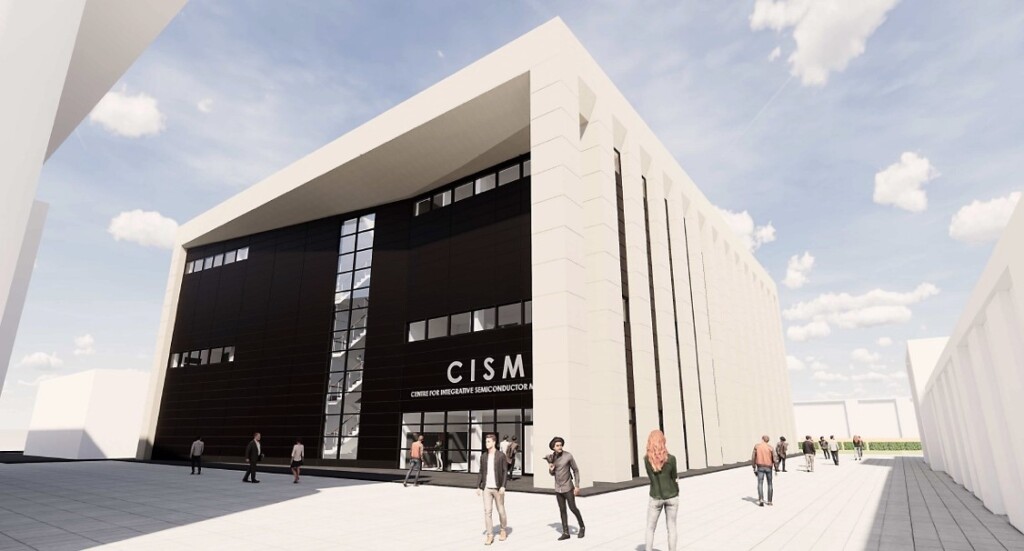AUTORE: Gaia Moreni
TUTORS: Giuseppe Crespi, Dean Bailey
INTERNSHIP: AECOM
MASTER: Master in “Progettazione sismica delle strutture per costruzioni sostenibili” a.a 2020/2021
La presente relazione ha lo scopo di illustrare il progetto svolto per il Centro per i Materiali Semiconduttori Integrati (CISM) all’Università di Swansea, nel Galles, Regno Unito. La progettazione si è limitata alla verifica in campo lineare della performance di due strutture isolate all’interno dell’edificio principale, atte ad ospitare attrezzature di laboratorio particolarmente sensibili alle vibrazioni.
Il problema del controllo delle vibrazioni è un problema sviluppatosi in seguito al miglioramento del dettaglio e precisione dei macchinari scientifici, che sono in grado di lavorare ad una scala di dettaglio del m. Le aree dedicate ad i macchinari consistono in due strutture isolate dal resto dell’edificio. La prima, una piastra di fondazione in CA dello spessore di 1m su 8 pali battuti, contenente una Nanosonda; la seconda, una struttura a due livelli composta da una piastra in CA dello spessore di 1m (ospitante una sonda a fascio) sostenuta da pareti di taglio spesse 400mm su una platea di fondazioni su pali.
La metodologia adottata è stata la seguente: dopo aver stabilito il criterio di vibrazione dei macchinari, ovvero il limite di velocità accettabile, si è passati ad individuare e quantificare le fonti di vibrazioni (naturali od antropiche, interne od esterne, temporanee o permanenti), a valutare il potenziale di esse sulla struttura e sull’attrezzatura di laboratorio, a stimare la mitigazione strutturale ed infine a valutare la risposta della struttura. L’analisi effettuata è un’analisi in frequenza, in modo tale da studiare il contenuto energetico della risposta alle diverse frequenze. I criteri dei macchinari, stabiliti dai produttori, sono in termini di velocità massima ammissibile a determinate frequenze od in termine di curve VC. Nel caso di entrambi i macchinari, è opportuno raggiungere il criterio di curva VC-G, equivalente ad un’ampiezza massima ammissibile di 0.80μm/s nell’intervallo 1-100Hz. Una prima analisi è stata dedicata alla modellazione e valutazione delle footfall, ovvero delle vibrazioni prodotte dal cammino di un essere umano. I risultati dell’impatto delle footfall sulla struttura sono stati ottenuti in ambiente di post-processing dopo un’analisi modale in ambito FEM, seguendo le linee guida CCIP-016. I risultati preliminari mostrano il raggiungimento della curva VC-D (equivalente ad una velocità di 6.25μm/s) e dunque il superamento dei criteri stabiliti. In seguito, si è passati a quantificare le sorgenti esterne: il sisma, il traffico automobilistico e ferroviario, gli impianti meccanici ed elettrici. Il sisma è stato definito mediante 5 accelerogrammi rappresentativi per studiare il contenuto in frequenza della risposta. Si nota immediatamente che le velocità raggiunte con il sisma nel sito sono nettamente inferiori ad i criteri limite. Le restanti sorgenti di vibrazione esterne sono state catturate mediante registrazioni audio in sito e convertite in accelerazioni con l’ausilio del programma MATLAB. I file ottenuti sono stati filtrati dei rumori di fondo e convertiti in input temporali in ambiente FEM. La totalità degli eventi registrati in 24 ore ci ha permesso di ricreare un modello rappresentativo del sito. Nel caso peggiore la curva raggiunta è la VC-E (equivalente ad una velocità di 3.12μm/s). Dai risultati si nota che la sola mitigazione strutturale non è sufficiente a raggiungere i criteri stabili; altre metodologie di isolamento dovranno dunque essere introdotte.
FOR INTERNATIONAL STUDENTS:
The following report will outline the methodology followed for the design of two isolated structure within the Centre for Integrated Semiconductor Materials (CISM) at the University of Swansea, Wales, UK.
The design was focused on the vibration analysis of the two isolated structures. Vibration control is a relatively new concern in structures, since the overall frame is getting lighter and the laboratory equipment work on a more detailed scale (of the order of m). The low-vibrations areas are two isolated structures: one is a 1m deep slab on piles, housing a Nano probe; the second is a two-level structure made of a two-way 1m reinforced slab for an E-beam and a Mask Aligner on 400mm thick shear walls on a slab on piles foundation.
The methodology adopted is the following: we first established the equipment criteria i.e. the maximum allowable velocity or acceleration, then we assessed the vibration sources (natural or anthropic, internal or external, temporary or permanent) and the potential of these vibration sources of impacting the structure and consequently the sensitive equipment. The assessment has been carried out in the frequency domain, in order to evaluate the energy content for the different frequencies. The equipment criteria can be either in terms of maximum allowed velocity or in terms of VC curves. In this project, we must meet the curve VC-G, equivalent to an amplitude velocity of 0.80 μm/s in the frequency range of 1-100Hz.
The first part of the assessment was focused on footfall. We modelled the structures using a FE program and performing a modal analysis; the modal properties have then been extrapolated and used in a post-processing environment, following the CCIP-016 guidance. The results show that we reach a VC-D curve (equivalent to a velocity of 6.25 μm/s) and therefore the criterion is not met.
The following step was to identify and quantify the external sources: earthquakes, traffic, railway, sea waves, mechanical and electrical plants. The earthquake was modelled using 5 accelerograms representing a typical event on site to allow us to perform an analysis in the frequency domain. The results show that the achieved velocity are much lower than the limit, therefore not concerning. The remaining vibration sources have been captured on site through audio recording measurement, later transformed into text files with MATLAB, representing the 24h-baseline and a series of single events in terms of time-histories accelerations. During the worst event, represented by the transit of a lorry, the structure response is that of a VC-E curve (equivalent to a maximum velocity of 3.12 μm/s).
Structural mitigation is clearly not sufficient to meet the criteria of the sensitive equipment; therefore, other specific isolation system should be considered.

